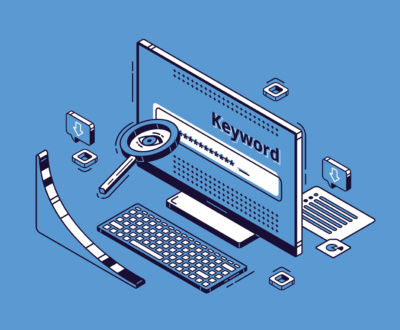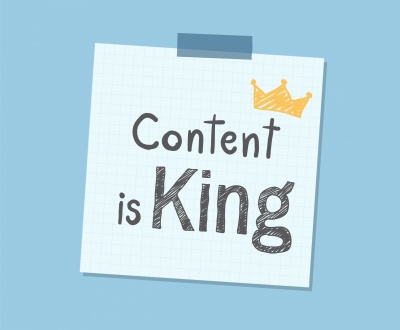How Conversion Optimization Improves the Performance of Websites and Landing Pages
Your website doesn’t exist just to look pretty. It’s there to drive business for you. As the central hub of all your digital marketing activity, you depend on your website and need it to achieve results. In simplest terms, your site does this by taking all the traffic you are pushing to it through search engines, paid advertising, social media, and other methods, and provides those visitors with a positive experience that ultimately makes them want to do business with you.
Your website is a machine designed to CONVERT visitors into customers.
Of course, with any machine, it may need a tune up in order to run more efficiently and raise your conversion rates, which is the percentage of visitors that take the action you want them to on your website. This desired action may be for visitors to complete a purchase, submit a lead form, or complete any other particular outcome that you may want to achieve. For example, if your website acquires 100 visitors, and three of those visitors make purchases, you have a 3% purchase conversion rate.
What if you want to change that rate from 3% to 4%, or 5%? How would you do it, and what kind of effect would that have on your bottom line? This is the purpose of Conversion Rate Optimization (CRO).
What is Conversion Rate Optimization?
Conversion Rate Optimization is the process of analyzing your website, landing pages, and conversion paths in order to determine ways to improve the experience and increase the likelihood that visitors will take the action you want them to.
Through the conversion rate optimization process, a series of tests are conducted on various elements of your website to determine the types of changes needed to effectively raise conversion rates and improve the overall performance of your site and traffic acquisition campaigns.
How does conversion optimization work?
Before undertaking a conversion optimization project, it’s important to ask a few key questions about your digital marketing objectives and the types of campaigns that you are currently running. Conversion optimization projects work best when they are focused on specific objectives, and can easily be diluted if they try to achieve too much across too many different elements.
Furthermore, if too many changes to the landing pages are implemented all at once, it’s impossible to tell exactly which change produced the desired result. This is why CRO usually takes a multi-stage or incremental approach to rolling out specific optimizations to the site. This is so that each change can be weighed and measured for impact before the next set of revisions is layered on.
First, you need to clearly define what you want visitors to your website to do once they arrive. Do you want them to make a purchase, download a file, submit a form, pick up the phone, etc. These actions all have very different outcomes for the visitor, so it’s important to understand their intent when they arrive, and compare that to what it is you’d like them to do once they’re there. Conversion optimization works by more closely aligning the purpose visitors arrive with to the action the business wants them to take.
Next, it is necessary to determine the nature of visitors coming to your site from different traffic acquisition channels. Depending on the path the visitor takes to arrive on your site, their experiences can be vastly different, with some achieving much higher conversion rates than others. For example, a visitor who comes to your site for a generic organic search term will likely have a very different purpose than a visitor coming to your site from a social media post or email campaign. CRO will help you refine the focus of your campaigns, and the landing pages associated with them, to match more closely and achieve better results.
Once you’ve clearly defined the objective of your conversion optimization project, and the types of traffic you intend to optimize for, you can begin to proceed with the analysis and testing phases.
During the analysis phase, it will be critical to determine the different entry points visitors typically use when arriving on your site, and which channels are the primary drivers of traffic to those points. Once these have been identified, the CRO methodology examines the overall landing page experience, general functionality, on-page content, call-to-action effectiveness, visual layout, ease-of-use, and many other different facets that affect whether or not a visitor will be influenced enough to take the desired action.
The results of the analysis will provide specific recommendations, based on proven landing page tactics and best-practices, to form the basis for the testing experiments that will be used to evaluate the impact that each individual change could have on conversion rates. These changes can take on many different forms, from altering the layout, condensing content, changing phone call CTAS to embedded forms, revising language, among several others.
In addition, conversion rate optimization tests need to be done with an ‘all other things being equal’ approach. This means that budgets, audience targets, acquisition channels, and other factors that determine the volume and nature of visitors to the site need to remain as consistent and stable as possible during the testing phase. If not, it can be extremely difficult, if not impossible, to determine if the changes observed in conversion rates are in fact due to the tests being conducted, or are caused by other factors.
From this list of specific recommendations, a plan will be formed that implements changes in a controlled manner according to a structured schedule designed to allow enough time for each change to be accurately tested and measured once it’s been applied. Often, these tests will be performed using a variety of tools specifically engineered to provide ease of implementation, greater analytical insights, and the ability to automatically control the flow of traffic to certain pages.
Let’s take a quick look at some of the tools and technologies that are typically leveraged in a conversion rate optimization project.
What are the different tools used in a conversion optimization project?
One of the most critical aspects of conversion optimization is testing to verify that the changes you make to your website or landing pages actually achieve the improvements that you want them to. In order to confirm this, tests need to be performed using a very scientific approach, comparing the current experience to the new experience and seeing how each of them performs against each other. To do this, we turn to A/B testing tools.
A/B Testing
A/B testing tools allow us to create two versions of a landing page to test against each other. Page A is generally set to be the existing experience without any changes, to be used as a control. Page B can either be an altered version of Page A, or an entirely different page, created for the sole purpose of identifying whether the proposed changes perform better than what is currently in place.
In addition to creating two different versions of landing pages, A/B testing also requires splitting the traffic coming to those pages without bias. This functionality automatically redirects visitors arriving to a specific URL to one page or the other, allowing both pages to simultaneously accumulate data during the same time period for an apples-to-apples comparison.
Once the test is completed, the resulting data will illustrate exactly how Page A compares to Page B in terms of its ability to generate conversions from the same traffic source during the same period of time, verifying the effectiveness of the new landing page design.
Heatmapping
Another valuable tool used in the conversion optimization process allows marketers a look into the actual on-page behaviour that users exhibit once they arrive on your landing pages. Known as heatmapping, this technology tracks the movement of the users’ mouse cursor and the locations that clicks take place while on your website and landing pages to provide information about the usability and intuitiveness of the pages design and layout.
Heatmapping often provides many eye-opening insights to businesses about how users interact with their website, such as that users will sometimes click on page elements that do not have any links associated with them, like images or graphic elements. This information provides businesses the ability to streamline their designs from a UX perspective, eliminating confusing on-page elements and other issues that could cause negative experiences for visitors.
One example of these types of tools is CrazyEgg, a combination heatmapping/AB testing tool that also includes functionality that actually records live user sessions so you can replay and watch their behaviour on your site. For a quick overview on how this works, here’s a short video from CrazyEgg that speaks to the Value of Visitor Recordings.
CrazyEgg Quick Hits CRO Tips Episode 1: The Value of Visitor Recordings
Google Analytics & PageSpeed Insights
Google Analytics is an essential tool for digital marketing in general, but it’s even more critical for conversion optimization. Closely monitoring changes in conversion rates and other KPIs during the testing phase, and analyzing the data at the end makes having some kind of robust web analytics solution, whether it is Google Analytics or another analytics suite, an absolute necessity.
Another Google product that is highly valuable for CRO projects is their PageSpeed Insights tool. Studies have shown time and time again that slow page load times and sluggish websites are toxic to conversion rates. Using PageSpeed Insights to check and re-check the performance of your website and specific landing pages can help add further clarity to conversion rate issues and identify areas of opportunity to improve.
What will an increase in Conversion Rate do for my business?
Now, you may be asking the question of what kind of impact a change in conversion rates could have for your business. The answer to that will vary drastically from business to business, and from industry to industry. However, there are some examples that provide at least a general reference for what is possible.
In this example, we will highlight what even relatively small 0.5% and 1% increases to conversion rates can achieve for an e-commerce retailer. The business used in this example will remain anonymous, however the values themselves are real.
This business has been challenged with waning conversion rates over recent months, and was looking for a solution to improve the ROI of their paid search marketing efforts. We provided some simple estimates to help demonstrate the potential impact that a conversion optimization project could have.
Recent conversion rates on this e-commerce website were hovering around the 4% mark from the SEM channel, so we used that figure as our starting benchmark. Here is the full set of values used to conduct our calculations, based on previous 12-month performance of SEM traffic:
- Base conversion rate: 4%
- 12-month Revenue: $1,020,127
- 12-month 25% Margin: $255,032
- Average Order Value: $109
- 12-month Total Transactions: 9,363
- Average Order Margin: $27
Using these base values, we extrapolated what a .5% increase and a 1% increase in conversion rate would mean. Here’s the estimates of what this business could potentially achieve.
A 0.5% increase in conversion rate, from 4% to 4.5%
would bring in $31,939 in additional margin
A 1% increase in conversion rate, from 4% to 5%
would bring in $63,612 in additional margin
Think about that for a second. No additional ad spend, no discounts on margin, and no special promotions. Plus, this example uses just one individual traffic acquisition channel. Imagine the impact it could have when factored across all the channels. This in particular is very important to keep in mind. When you conduct a conversion optimization project on your website, the positive changes you make can have far-reaching effects that can accumulate far beyond initial estimates.
Tune the Dials of Your Website & Generate More Business from Your Visitors
As you can see, the benefits of conversion rate optimization can be quite impressive. If these kinds of increases are something that you’d like to see happen for your website, there’s no better time than now to get started.
Contact the team of conversion optimization experts at WMT today and learn how we can help your business achieve higher levels of ROI from your digital marketing campaigns and boost the ability of your website to turn visitors into customers.
About the WMT Blog
We are a digital marketing company and want to share ideas as inspiration for current and prospective clients.
Questions? Contact us today for more information!
Request a quick estimate on any of our professional services designed to help brands increase exposure across all the most important touchpoints - SEO, Paid Search and Social Media.











